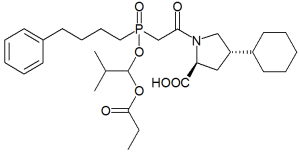LAKE BUENA VISTA, FLA. -- Second-generation angiotensin converting enzyme inhibitors have supplanted the first-generation drugs for treating cardiovascular diseases.
The first-generation ACE inhibitors include captopril, enalapril, and lisinopril. The second-generation drugs include quinapril, ramiptil, fosinopril, and several others.
That's because the second-generation agents have much better tissue penetration, compared with the first-generation ACE inhibitors. "In our bodies, most of the ACE and angiotensin conversion occurs at the tissue level, and that's where we want the drugs to he," Dr. Carl J. Pepine said at a meeting sponsored by the American College of Cardiology.
Several features distinguish the two generations and help to explain their
different clinical effects, said Dr. Pepine, chief of the division of cardiovascular medicine at the University of Florida in Gainesville.
The second-generation drugs are much more lipophilic, which helps them penetrate tissues at much higher concentrations. These agents also bind to their target enzyme more tightly and wash out from the body more slowly, compared with first-generation drugs, which is why they are used once a day.
Although the first-generation ACE inhibitors are fine for controlling angiotensin conversion in plasma, it is the ACE in tissues that has a bigger impact on the long-term course of cardiovascular disease. Plasma ACE primarily mediates acute effects during emergency situations.
The different clinical effects of first- and second-generation ACE inhibitors were highlighted by the results of a recent study that compared captopril, quinapril, and placebo in patients who were scheduled to undergo coronary bypass surgery After 1 month of treatment with one of these three drugs, a small piece of each patient's internal mammary artery was harvested during surgery.
The arterial walls from patients treated with captopril had much higher levels of ACE activity compared with the patients treated with quinapril. This difference correlated with clinical effects: One year after surgery the quinapril-treated patients had significantly fewer rehospitalizations than the patients treated with captopril or with placebo, he said.
COPYRIGHT 2000 International Medical News Group
COPYRIGHT 2001 Gale Group



